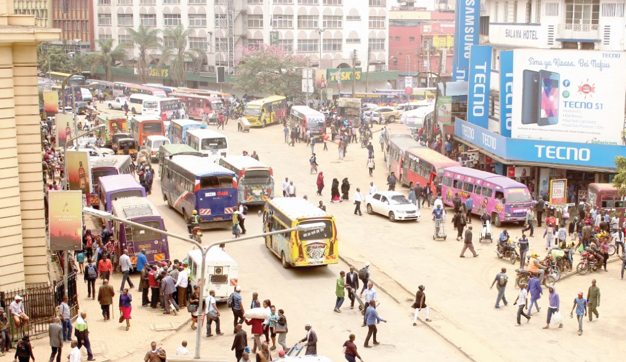The brainless part of road safety equation
By Clay Muganda, April 19, 2025Earlier this week, the National Transport and Safety Authority said that at least 12 lives are lost on Kenyan roads daily, and I remembered a lesson I learnt on road safety when I was younger.
Those many years ago, the chap who used to drive my pensioner father around complained about pedestrians who cross the road without checking if there are oncoming vehicles.
His boss, who was my father, told him that he must be extra careful when he is behind the wheel because the roads have all sorts of characters, dealing with different kinds of problems that can affect their judgment.
He said there are people with poor hearing or eyesight, people who have been dumped by their spouses, people who have sick relatives, or those who have lost their loved ones or their jobs. The majority, he added, are those who are just brainless.
While his take that the majority are brainless can be considered an exaggeration, he was not far from the truth that several road users in Kenya are unintelligent and rude – and the people who are tasked with maintaining order on the roads make the situation worse because they just want to collect bribes.
This may sound unfair, but I want to believe that I speak for many road users when I say that the National Police Service is the weakest link when it comes to making Kenyan roads safe.
In other countries, traffic police departments strive to make roads safer, but in Kenya, they want to create chaos so that they can extort money from motorists after accusing them of flouting non-existent traffic rules.
Collecting bribes has been normalised by the police so much that passenger service vehicle operators set money aside for this purpose, and consider it as operating costs because it also allows them to operate unroadworthy vehicles or employ reckless drivers who do not understand traffic rules.
This is why the police are complicit in those deaths, which are part of the data recorded in the road safety report released by the NTSA earlier this week.
The NTSA report says that 3,581 fatalities were recorded between June 2024 and March 2025, marking a 10 percent increase compared with the 2023/24 financial year, with 8,874 road users sustaining serious injuries and 5,620 suffering slight injuries.
These grim statistics fly in the face of the NTSA’s much-touted National Road Safety Action Plan 2024-2028, whose launch on April 17, 2024 was a high-profile event attended by President William Ruto and several foreign dignitaries.
The action plan is the brainchild of the Ministry of Roads and Transport, and together with the NTSA, they wax lyrical about it, describing it as an initiative that will curtail the alarming rate of road accidents, which shatter families, devastate communities, and pose a significant economic burden on the nation.
The ministry and NTSA say that road carnage costs Kenya Sh450 billion annually, and the brunt of this burden falls on trauma victims and their families, with hospitals and emergency services straining to provide adequate care.
The plan is good on paper, considering that a year after its launch, you will be hard put to pinpoint any of its so-called comprehensive set of strategies such as improvements to road infrastructure and vehicle safety standards, stricter enforcement measures, heightened public awareness campaigns, and promotion of safe driving practices.
All these measures are meant to enhance road safety for all users, but for the traffic police department, they are a hindrance because an efficient system might eliminate bribery, nay, daylight robbery, a vice that they not only live on, but live for.
It is what makes them stand in torrential rain to control traffic at junctions where there are traffic lights, and cause further chaos so that motorists can flout the non-existent traffic rules and become easy prey for extortion.
The NTSA road safety report says that pedestrians top the list of road accident fatalities, followed by boda boda riders, their passengers, and cyclists, with Nairobi a hotspot of accidents.
Of course, the police cannot accept responsibility and will blame motorists for not knowing or failing to observe traffic rules, but who tested them and found them fit to drive?
Even during tests, the police are bribed, and several driving schools assure their students that they will pass because they grease the palms of the police officers who conduct the tests.
That is the common practice, and anything to the contrary is frowned upon, and the NTSA cannot say that it is not aware that driving schools pay bribes so that all their students pass the tests.
And even as the action plan puts drivers at the forefront of road safety campaigns, the NTSA is aware that traffic police officers are the weakest link – and brainless lot on our roads.
— The writer is the Managing Editor of the Alliance for Science (AfS). These views are solely his and do not necessarily reflect the position of AfS or its partners
